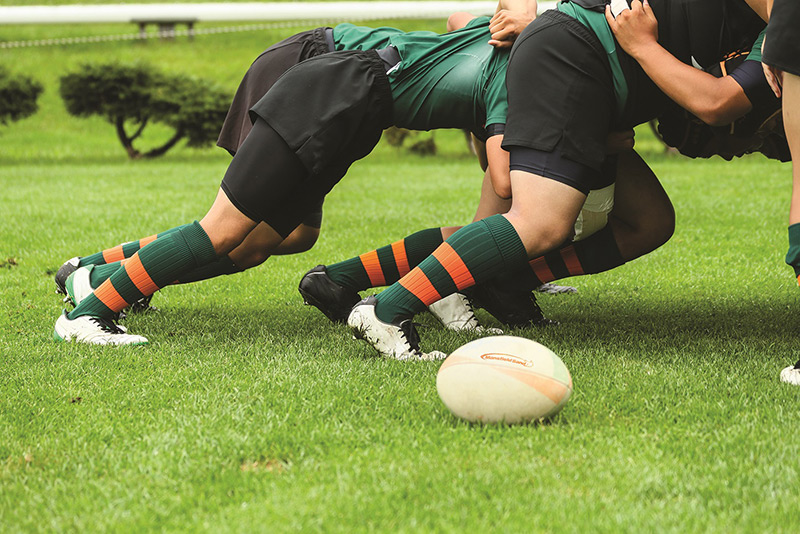Quality Sand = Healthy Sports Pitches
Top tips from Mansfield Sand

Mansfield Sand’s Gary Cunningham gives his top tips for a healthy sports pitch.
A high-quality sand is vital to the overall health and performance of a sports pitch and Gary Cunningham, Football & Golf Sales Representative for Mansfield Sand, explains why.
Mansfield Sand has pioneered the development and production of premium silica sand-based products for over 170 years. The company provides a wide range of innovative products for sports, landscaping, and equestrian uses. These include stadium and training ground facilities; championship golf courses and world class show jumping arenas.
With a wide range of sand-based products available, it can sometimes be difficult to know which one will be most suitable. So, what should we be looking for in a good sports pitch dressing?
“Ideally a good quality silica sand dressing, aerated into the surface is all winter sports pitches require,” said Gary. “However, it is important to select the right industry grade of sand which is suitable for sports dressing application.
“A quality washed sports grade silica sand will be graded between 30 and 45 and each grade will be proceeded by two letters which designate the quarry they are supplied from. The lower the number, the coarser the sand is and vice versa - the higher the number, the finer the sand.
“There are also some sands that are unsuitable for winter sports pitches,” continued Gary. “Generally, you need to stay away from fine and coarse/grit sands. Finer/building sand will in effect seal up the surface while coarser products can destabilise the surface over time. Any reputable supplier of sports sand products will be able to provide you with a product grading and technical sheet.
“At Mansfield Sand, we predominately provide two grades of silica sand to the sports market, MM35 and MM40 – which are sourced directly from the company’s Two Oaks quarry in Mansfield.”
Gary spends most of his days travelling up and down the country visiting a variety of sports clubs from world class stadia through to grass roots. The most popular choices are 29 tone and 20 tonne loose tipped deliveries for full pitch dressings and 1 tonne bulk bags for when a little is required for touch up’s and divots.
Gary further explained best practice when it comes to divoting and touch up’s – particularly in goal mouth areas.
“Post-match divoting is best done with a fork by teasing the surface back together with a light dusting of sand to aid surface levels. For bigger deeper scars, a small amount of sandy rootzone mixed with a little seed can be used to add a little body to prevent it being kicked out. As only a small amount/hand full of rootzone are being used, it is possible to ensure it is stone free.
“Goal mouth areas are one such area needing extra attention - no amount of aeration and dressing will stop the grass thinning out on a sand soil surface. In severe situations if wanting to level the surface you can dig out the compacted rootzone and replace with a depth of fresh rootzone or even a reinforced product. If the area is just experiencing general wear, then a normal renovation sand dressing can be OK with an overseed.”
Gary also claimed that there can sometimes be some confusion between a rootzone and a pitch dressing.
“I quite often get asked for a sand soil dressing or a rootzone product to be spread over a pitch, but this always sets off alarm bells as this is not what rootzones are designed for,” he said.
“Rootzones are manufactured products of differing sand soil blends to be used in pitch construction as the growing medium for the grass. Rootzones all contain small stones which when spread over the surface can damage mowing machinery or cause player injury.
Mansfield Sand sieve down to 6mm for rootzone products.”
Gary recommends somewhere between 60-90 tonnes of sand for an end of season renovation on a full-sized playing area but stressed the importance of applying it properly.
“It will be important not to spread to much sand so as not to smother the grass plant or have a lot of sand laying over bare areas. It is good practice is to aerate during the sand dressing process, working the material into the upper rootzone profile.”
For more information visit www.mansfield-sand.co.uk
You can also follow the company on Twitter - @MansfieldSand and Facebook - https://www.facebook.com/MansfieldSandSportSurfaces/











































